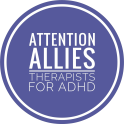Psychotherapist, counsellor and ADHD coach Duncan E. Stafford hopes you “don’t feel normal”. Why is this and how can it help ADHDers to create useful tools for self-development?
(5 minute read)
The subject of “normal” in connection with adult ADHD is one that comes up regularly in my consulting room. Any quick search online for information about adult ADHD will support the persistent nature of questions like this, returning results such as:
- “Can someone with ADHD have a normal life?”
- “Is ADHD considered normal?”, and
- “Can you be normal and have ADHD?”*
This fascinates me because the concept of the “normal” human being is both subjective and perhaps, surprisingly, a relatively new concept.
The word “normal” – from the Latin root normalis, meaning something made according to a carpenter’s square – hadn’t been applied to human beings before the nineteenth century, when Adolphe Quetelet published “On Man and the Development of His Faculties, or Essay on Social Physics”.
In the years before 1835, “normal” was a term used only in mathematics and related disciplines, including astronomy. Quetelet took the astronomer’s error curve or, as it became known, the “normal distribution curve” and applied it to measuring humans. And the rest, as they say, is history.
A subjective term
“Normal” in relation to people is a subjective term. When used as a description, it implies a thing that should be aimed for or agreed upon. Being “normal” in human terms suggests the acceptable boundaries of what a person is or should aim to be. “Normal” is applied to the body through size, weight, shape, strength and so on; it’s applied to the mind in terms of aspects such as cognitive ability, sanity, reasoning and perceptual speed, among other measures. If we look at the term historically, it has often been used to reinforce white, Western and middle-class people’s definitions and standards of humanity. And so, you might see why I have a problem with ADHDers asking if they are “normal”. I might even suggest: “Who wants to be ‘normal’?”
Our development since childhood has been measured against created “normal goals”. In school, our abilities are tested to see if we reach at least the minimum, “normal” or “average” of others in a range of things thought to be the most useful.
Hyperkinetic to ADHD
When I was at the end of my school education, the term ADD (1980)** had hardly begun to be used, and ADHD (1987)*** hadn’t yet been created. In my own school era (and perhaps even today), students with ADHD were likely to be castigated for their internal motor-driven impulses and told to sit down, behave, stop being careless, stop making silly mistakes and stop being naughty, disruptive or “stupid” rather than receiving positive comments about themselves. Nothing on the preceding list was valued as good “normal” behaviours in classrooms. But the balancing behaviours often seen in the hyperkinetic child – as pre-1980s psychiatry, developmental psychology and education then termed ADHDers – weren’t valued in such children. It was, and perhaps still is, almost invisible to many the ultra-inquisitiveness, robust enthusiasm, unusual or eccentric creativity, sweeping spontaneity, fantastical imagination, and lively conversational skills and personality that the ADHDer brings.
When an ADHDer asks me “Am I/Is it normal?”, I tend to answer “I hope not!”. I suggest that we replace “normal” with “typical” in terms of feelings and behaviour. From there we can often see what someone’s real question and/or concern about themself is: “Are there other people like me?” If that inquisitiveness (typical of many ADHDers) can be engaged with, it may allow the inquisitor to feel calmer, less alone and, importantly, able to ask more questions of themself and what I call “the soup” we were brought up in and live in. In creating an interest not in normality, but in similarity, we potentially lead to the prerequisite for the creation of vital personal tools for self-development. As a therapist, I can help ADHDers engage and support self-actualisation and self-determination.
Back to the curve?
So, are you tempted to plot all of this on a standard deviation curve? I’m not. To do so is to limit our creative engagement with understanding ourselves in an attempt to reach mythical, societally created norms.
I like to know what others do and why they think they do things, but I like to help ADHD people understand that living your life by comparison to created norms tends, on the whole, to make an ADHDer feel claustrophobic, tense and constricted at minimum. ADHDers don’t need more restriction or created failures; they need freedom to be, and for that they need flexibility.
Footnotes
* Retrieved from Google search 10 August 2024.
** The American Psychiatric Association released a third edition of the Diagnostic and Statistical Manual (DSM-III) in 1980 in which it renamed Hyperkinetic Reaction of Childhood to Attention Deficit Disorder (ADD). Two categories were outlined: with – and without – hyperactivity.
*** The American Psychiatric Association released a revised third edition of the Diagnostic and Statistical Manual (DSM-III-R) in 1987, in which it renamed ADD as Attention Deficit and Hyperactivity Disorder (ADHD).
Click the links if you'd like to visit Duncan's therapy website or her directory entry on Attention Allies.
Published 17 August 2024
All rights reserved © Copyright Duncan E. Stafford 2024. Unauthorised use and/or duplication of this material without express and written permission from the author of this post is strictly prohibited. Author contact via website Contact page.
Website version and image © Copyright Attention Allies 2024.
